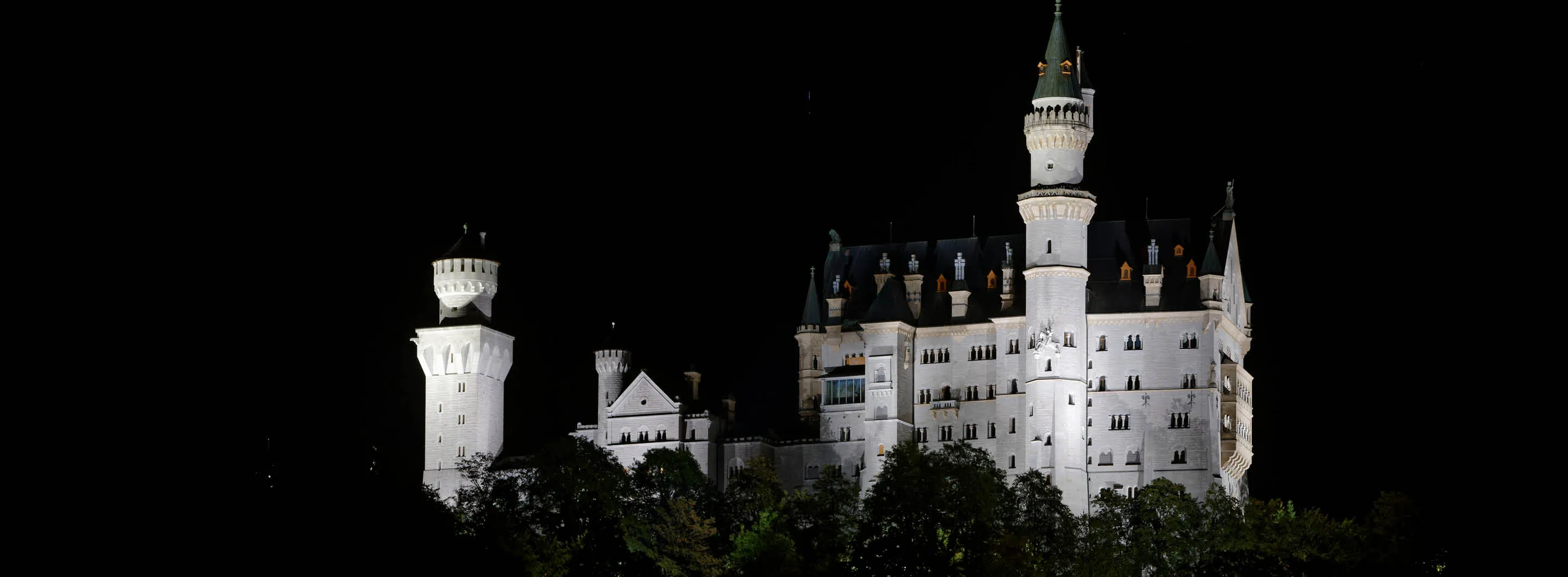Architecture of Neuschwanstein - The Romantic Vision of King Ludwig II
Dive into the architecture of Neuschwanstein Castle — where Gothic spires, Romanesque arches, and fairy-tale imagination converge into a Romantic masterpiece.

Neuschwanstein’s architecture is not of any one age — it is a symphony of ages imagined.
It fuses Romanesque, Gothic, and Byzantine styles into a single composition of dreamlike unity.
🏗️ The Visionary Design
Unlike medieval fortresses, Neuschwanstein was built not for defense but for fantasy.
Christian Jank’s concept drawings resembled opera sets more than architectural plans — dramatic, theatrical, and symbolic.
Architects Riedel and later Dollmann transformed the dream into brick and limestone:
- Romanesque arches recall the churches of the Middle Ages.
- Gothic pinnacles reach heavenward like cathedral spires.
- Byzantine mosaics shimmer in the Throne Hall with divine gold.
The result is a building that never existed in history — but could have existed in legend.
⚙️ Modern Genius Beneath Medieval Form
Though outwardly medieval, Neuschwanstein was technologically advanced for its time:
- Running water on all floors.
- Flush toilets and a central heating system.
- Telephone lines connecting servants’ quarters.
- A hydraulic lift for food delivery between floors.
These innovations made it one of the most modern residences in 19th-century Europe — a paradox of modern comfort within medieval fantasy.
🎭 Symbolism in Stone
Every architectural detail serves a symbolic purpose:
- The gateway tower represents purification before entry into the sacred realm.
- The turrets mirror the music of Wagner’s Lohengrin, rising like melodies into the sky.
- The inner courtyard evokes the spiritual heart of a knight’s world — courage, faith, and longing.
“Neuschwanstein is architecture as opera — every stone a note in Ludwig’s unfinished symphony.”
🌄 The Castle and Its Landscape
Ludwig chose the site with poetic precision.
Perched above Alpsee and Schwansee lakes, framed by the Ammergau Alps, the castle appears as if born from the mountain itself.
Its orientation captures both sunrise over the peaks and sunset over the plains — a daily theater of light and shadow.
Neuschwanstein’s architecture does not imitate the past — it resurrects the dream of it.
About the Author

Architectural Historian
A travel enthusiast and history lover, I created this guide to help visitors experience the magic and stories behind Neuschwanstein Castle.
Tags
Comments (0)
Loading comments...